The UK Government and BAE Systems have secured more work for Glasgow’s shipyards after Norway confirmed it will buy the Type 26 frigate, with the Clyde set to play a central role in the programme.
Deliveries to the Royal Norwegian Navy are expected to begin in 2030, tying the future of Scottish shipbuilding more closely into NATO’s northern defence.
The Clyde is already busy turning out the Royal Navy’s eight Type 26s, with the first three ordered in 2017 and a further five added in a £4.2 billion deal signed in 2022. That contract underpins about 1,700 jobs directly at the Govan and Scotstoun yards, with another 2,300 spread through the wider UK supply chain. BAE has also poured more than £300 million into upgrading the facilities to keep the line moving for the next decade.
“It is good news for the Clyde. Securing this work gives us confidence for the future and keeps skilled jobs here in Glasgow,” one yard worker told UK Defence Journal.
Norway is expected to order at least five frigates, enough to replace its four surviving Fridtjof Nansen-class ships and rebuild the numbers lost after the sinking of HNoMS Helge Ingstad in 2018. If confirmed, the deal would make the Clyde the construction hub for more than twenty Type 26s worldwide, counting ships already committed for Britain, Australia and Canada.
The impact reaches beyond BAE. Ferguson Marine, further downriver at Port Glasgow, has already won work on the programme, fabricating structural modules for the fourth Royal Navy ship, HMS Birmingham. For a yard that has struggled in recent years, these contracts provide a lifeline and show how the Type 26 supply chain is spreading benefits across Scotland.
Economically, the numbers are significant. Defence spending on frigates alone is estimated to support more than 12,000 jobs in Scotland when supply chains are factored in. Every major contract brings a multiplier effect across the region, from steel cutting to advanced electronics, reinforcing the Clyde’s place as one of the UK’s most important industrial clusters.
The Norwegian decision also has a strategic dimension. By joining the Type 26 community alongside the UK, Canada and Australia, Oslo ties itself into a long-term multinational programme with shared training, maintenance and upgrades. For the Clyde, it means the yard is now building ships not just for the Royal Navy, but for NATO allies facing the same threats in the North Atlantic and High North.
With the order book stretching well into the 2030s, Glasgow’s yards are secured as the heart of Britain’s advanced warship production, a position strengthened rather than threatened by the internationalisation of the programme.



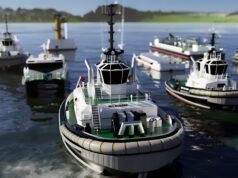
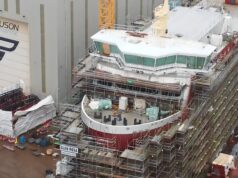

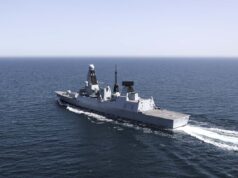

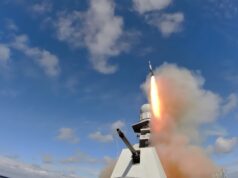
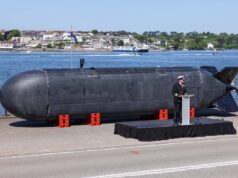
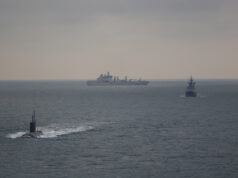
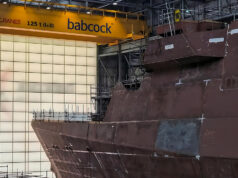

Fabulous news for BAE management [who will have worked hard to get this], the yard workers [who have long term security], RN [whose cost base for T26 has been shrunk back to what it would have been in UK PLC ordered 13], NATO [which now has 13 first class, European based, ASW frigates], UKPLC [our economy benefits from investment from a country who used their oil wealth for the good] and you could go on and on about how good this is.
Very good news all round.
Well said – celebrate we should indeed
Maintaining the faintest hope that the economies of scale will reduce T-26 class cost basis to a point wherein it becomes a fiscally viable alternative to the Consternation Class, currently being sailed into uncharted underwater design/cost shoals at flank speed. USN would probably advocate for a Hunter or River design variant, which Congress could mandate acceptance of w/out endless spec changes. BAES is fortunately now considered to be a quasi-US entity, conforming to buy American procurement requirements. Same logic may eventually be applicable for maintenance/refit of USN submarine force. 🤞🤞
I’m sure Mark Carney would do Donald a tariff reduction deal on River class for the Complication class 😂
Great news. How come it hasn’t been reported anywhere else?
The news only just broke just before noon today!
It’s in Reuters, all across social media. I wouldn’t be surprised if the BBC did an article.
Can’t see the BBC getting excited about a British Industry success.
UK agrees £10bn deal to supply Norway with warships from the BBC Website
Only cos I said they wouldn’t 🤣
Front page of the website as of 14:52 🤷
A bit bold of the BBC journalist to label Janet Harvey as female.
Well, they have. Can’t post links but ‘UK agrees £10bn deal to supply Norway with warships’.
Well, they did!
Actually they did notice!
Yes, and they’re getting wobbly about immigration too. Maybe they’ve had an epiphany!
The word gets out before the official announcement I presume. But usually these sort of decisions do seep into the mainstream press too so maybe being in the vicinity George has a mole in the yard.
Awesome news for the UK’s shipbuilding industry. Though I am interested in how BAe fulfills both the RN’s and RNN’s requirements simultaneously? Will it mean one of the hulls earmarked for the RN being completed instead for the RNN? Or can BAe build another line concurrently without interrupting the RN’s line?
General Eirik Kristoffersen (Chief of Defence) recommended that Norway replace the current Fridtjof Nansen-class with six ships. However, this was later reduced to five by the Government. Will there be a clause for additional ships, once they’ve nearly completed. As by that point the economy of scale would have reduced their capital costs?
Will be interesting to see if Norway directly follows the RN’s T26 fit out. As the Nansen’s currently use a four fixed panel SPY-1F PESA radar, rather than the Artisan? They also use ESSM as the only surface to air missile. Will they change to CAMM+CAMM-ER/MR? The Nansen has in theory better long range detection, as well as surface to air engagement capability over a standard T26 if using Artisan and CAMM (standard). Though the SPY-1F is a smaller version of the ones used on the Arleigh Burke’s. Its greater surface area “should” generate a longer detection range than Artisan.
The Norwegian press release states:
‘The Norwegian and British vessels will be as identical as possible, and have the same technical specifications.’
The BAE design retains the CAMM from what has been seen at trade shows, et cetera. The spokesperson in the video describes the British proposal as having essentially no differences with the current British ships, outside from the NSM. We know the Artisan can track complex targets such as short-to-medium range ballistic missiles, so I don’t think it’s the weak link. The basal CAMM might be, but if Norway could be hooked into the CAMM programme, they could receive CAMM-MR in the future as you suggest.
Hi leh, yes that’s my though too. Norway it seems want the vessels as soon as possible with the minimum of fuss or delays. Sticking with the base vessel should do this. For me, it makes absolute sense, to integrate at least the CAMM-ER. The CAMM-MR would be the gold plated solution for wide area coverage, that is on par with the latest SM2.
Hey Davey, I think you’re spot on with your ‘minimum of fuss’ assessment, the Norwegians seem very driven to get this into service.
CAMM-ER would make sense, and could always be packed into the mushroom farms with some cell extension work if required. The CAMM-MR is another great option into the 2030s, though IINM the performance will only be around >100km, rather than the >170km offered by the SM-2.
There’s no reason why the RN can’t also have NSM on the T26s as a second tier ashm and same mounts on the hangar roof. Classic CAMM will have its place but there might now be more incentive to get the CAMM-MR performance made greater than the 100km+ and if its also to be part of the UK GBAD network.Wonder if the CAMM can be married with the NASAM launcher?
I presume experience of the Australian version would help there if such a fit were required. Be interesting to know mind what difference the SPY-1F has in terms of weight etc as compared to the Australian set up because as we know the Australian T-26 version is a little wider in the beam to handle it. That would be problematical one presumes if alterations of that extensive nature were incorporated into uk production lines not to mention scale savings so seems unlikely. Can’t wait to see the details.
I doubt there’ll be a significant radar or CMS change on the Norwegian side. Part of the requirements (see my above comment) was specifically to ensure that their ships were as close to identical as possible with the ships of the partner nations, so Artisan and CAMM are good bets.
Not forgetting the Canadian version of the T2 the River class, with their SPY-7 S-band panels. Which should on paper be every bit as good as the Raytheon SPY-6, being fitted to the Arleigh Burkes. Models of the River that I’ve seen show four fixed panels mounted to a mast above the bridge similar to the Hunter’s CEAFAR. However the mast is much shorter, as the panels are much bigger, so must weigh considerably more. Interestingly the Rivers are using the SPY-7 for both long range volume search as well as tracking, but also incorporate four smaller x-band fixed panels for semi-active target illumination as well as close distance (horizon) tracking. Both the Hunters and Rivers, split this role, whilst our T26s will have to use Artisan to do all the roles. Not a wise choice due to the number of threats a ship can face today.
Will the terma 6000 radars fitted to the RN type 26s not contribute to close range and low airspace surveilance? I know helicopter control is one of their rolrs ,but each ship will have two sets, one fore and one aft l think.These are x band radars but only 2d.
Would also like to know your thoughts on the french heracles radar as the french fremms seem to use thrse as yheir only radar too. One shot down a ballistic missile in yhe red sea. Obviously not in yhe league of a ship with a seperate volume search radar but still quite impressive.
Being able to track low-tier ballistic missiles isn’t too uncommon for modern radars. The Artisan system can track short and medium range anti-ship ballistic missiles, despite being a relatively conservative platform. When paired with an interceptor of the Aster-30’s calibre such an interception is by no means unexpected.
As you’ve already said Terma is a 2D radar, i.e. it gives you range and bearing only. It won’t give you height information, which is crucial for working out a missile intercept. Although they say it doesn’t do velocity tracking, I’m sure with the right software it could if needed. The software is the key, can the signal processing work out relative velocities to track fast moving objects. It might be able to show there’s an unknown object out there. But can the software discriminate and identify the object?
Unfortunately the radar antenna is really the wrong shape to provide accurate height information, this would need to change. As the radar rotates 360 degrees, it also would need mechanical elevation, which would have been the legacy method for scanning the height of an object. A better method would be to replace the forward and aft Terma with four X-band AESA panels. Then these could be used for both navigation, helicopter/UAV ops, but also threat tracking for autocannons and missiles. Plus it would add another layer to the ship’s defences as a back up to the main radar.
The Thales Heracles radar is similar to BAe’s Artisan. In that it is a mechanically rotating single panel, however it uses passive electronically scanned array (PESA) technology, whereas Artsian uses active electronically scanned array (AESA) technology. According to released information, there is only one antenna array panel underneath the rotating pyramid that is used to protect the radar from the elements. Again similar to Artisan in having only one active antenna. Both radars are capable of tracking ballistic missiles. Artisan got a software upgrade a couple of years ago and was tested aboard a T23 during Ex Formidable Shield. Heracles does use a more rounded shaped array compared to Artisan, which should generate a tighter and more rounded beam. However, Artisan being AESA will be more resistant to jamming as it operates over a broader ranger of frequencies. But being AESA will be capable of multibeam transmissions, which Heracles really isn’t.
To be brutally honest the T26 should have a better radar fit. I’m content it won’t get SMART-L/S1850M for long range volume searching, as that’s not really its role. But I believe it should have the full Sampson fit. As the two back to back radars will provide the ship with significantly better situational awareness, along with a much better capability to track threats. So if the ship does get integrated with the other versions of CAMM-ER and CAMM-MR, it will provide not only a more enhanced deterrent, but also be able to protect itself better, due to the longer engagement range.
Can they then do a back to back Artisan?
Thanks for your comments on radar panels which I asked below before reading your post.
Hi Davey, do you think additional radar panels could ever be added to the T26s to compliment the Artisan? Or, too much rework on the mast? Can the Artisan’s be further improved, even significantly?
Can you tell us about the “unicorn” radar mast on the Japanese Mogami’s? What exactly is that about as its pretty unique from anything else?
Can they then do a back to back Artisan?
Thanks for your comments on radar panels which I asked before reading your post.
Hi Quentin, lots to unpack.
UNICORN = UNIted COmbined Radio aNtenna. This is the NORA-50 integrated mast that contains Tacan, tactical data links and communications. Apparently, it is that shape to reduce its radar signature, The actual radar (X-band) is the four smallish square panels below the UNICORN mast.
Can Artisan be improved? For example mounting a pair of Artisan panels back to back. Yes, in theory you could. But the main factor is weight. Can the mast handle an additional 900kg of weight? If it can and there’s sufficient margin, why not go the whole hog and fit Sampson? If a lot of additional weight is not an option, then a lighter method of improvement would be to double the height of the antenna array. This doubles the number of active transmitter-receive modules (TRMs). Which not only improves the beam shaping, but also the effective radiated power and conversely the receiver sensitivity. So the radar will be a be to see and detect stealthier targets further away.
The mast could also in theory have four X-band AESA panels fitted to it. Again we would have to make sure the composite mast can handle the additional weight. But as they are fairly light weight, they could be mounted higher up the mast. Therefore increasing the distance of the radar horizon. Though Terma Scanta 6000, can see objects really close, as in less than 30m. Which is crucial for bad weather helicopter operation from the aft flight deck. So having the aft facing X-band high up the mast may not be the best place for heliops.
Brilliant news, but this will definitely mean the RN will have delays on its hulls.
In the short term, probably. But for NATO’s northern seas defence policy it will make no difference numbers wise. In the longer term (mid30s) eNATO will have 13+ of the best ASW ships in the world. Plus whatever the USN can spare for the area. France, Italy and Spain can then focus on the Med.
Putin will regret his Ukraine adventure.
I think your logic is correct, if the numbers are the same if they are Norwegian manned or uk manned the capability stays the same with increases in capability longer term. Beyond my pay scale (others here will be better placed to judge) but as modules can be built all over the place and even potentially joined in part in the old shed they can increase the rate by wheeling in substantial multiple joined hull sections to fully join in the new shed as soon as one of those being completed there are floated off. So I reckon there must room for an uptick in production pace. But an initial effect is likely inevitable one presumes.
I suspect that it will be relatively easy to increase the pace of fabricating blocks, we have already seen that Fergusons are desperate for work and will be all over an increased build rate. Likewise Cammell Laird, who have already recently delivered a large block for ship 4, and no doubt will be happy to go on doing the same. As has been said elsewhere here, steel is cheap and easily understood. The real bottleneck could be in areas like the main machinery, how quickly can the gearboxes be built, bearing in mind that DB will have to build 30+ units in the next ten years. And areas like the radars could prove testing.
I have no doubt that this will have been picked over exhaustively during the contract negotiations, I just hope that our beknighted treasury doesn’t use it as an easy excuse to slow up the RN delivery rate, or even to chop a few units off the RN order.
Supporting the 13 T26s will also be the 6 new ASW frigates that Damen is currently building for the Belgium and the Dutch navies.
It will have a major impact on the delivery of the RN Ships,but this was an opportunity too good to miss,and both Navies will operate them in the same areas for the most part so no real loss of capability.
Excellent news, though we still need more ourselves – building capacity really needs to be expanded.
Building Capacity has been addressed.
Really great news. Kudos all round 👏. Puts the pressure on expectation of effective lifex for the remaining TA T23s.🙏
Will this news erk Agent Orange? We all know he wants “allies” to buy from the US as part of his strategy of increasing the US’s manufacturing base. Obviously, the speech from the previous Norwegian PM that an ally who threatened to annexe another ally’s territory is no ally at all, is the government’s current thinking.
like the 10% extra that he is adding to European purchase of US wantons for Ukraine. that wont be forgotten about
should say “Weapons “
I was wondering if the CCP had gotten to you!
Do you eat a lot of chinky food?? 🤔🤔
Just £10billion. Thees days its just a drop in the ocean. The UK Smartmeter rollout cost us more than that. It will be interesting to see how this deal turns out.
The value of keeping shipyards and workers in work with complex skills retained and a large increase in ASW coverage in the high north as no cost to the Exchequer is worth many many multiples of £10bn
I really wish they would publish the data behind the economic benefit to the country. The civil service to evaluations for all major government projects, so why not also do it for defence. It would shine a light to the public that the upfront expenditure is not the full story.
Having the full info might make people more inclined to think defence expenditure is an important voting matter.
By the way SNP you now have not 13 major combat ships being built in Scotland but 18 major combat ship. So can you please stop saying the UK goverment did not keep there promise.